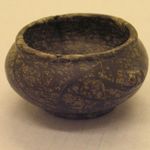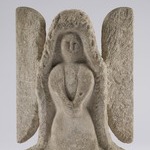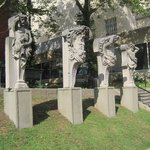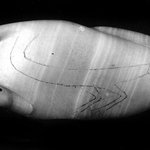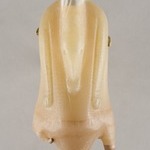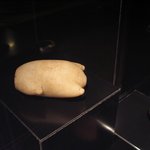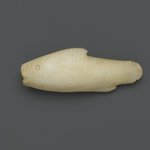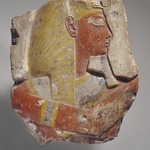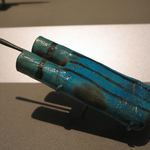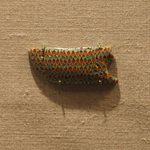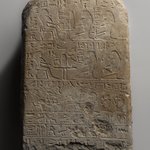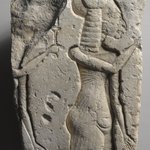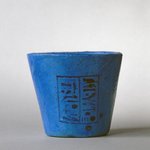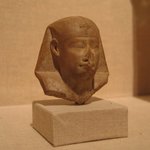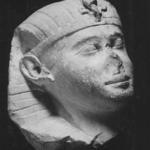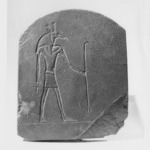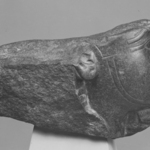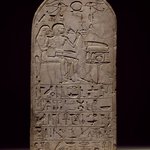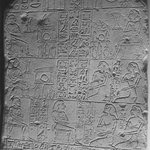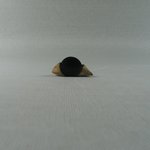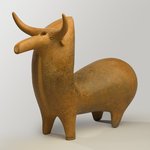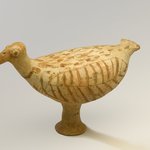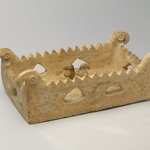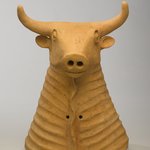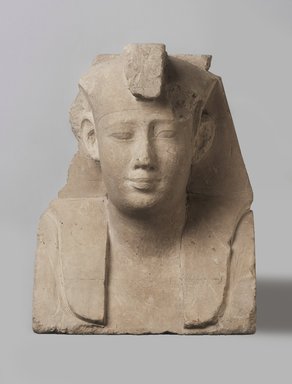

Sculptor’s Model of a Royal Head, 381–2nd century B.C.E. Limestone, 9 1/4 x 7 1/8 x 4 7/16 in. (23.5 x 18.1 x 11.2 cm). Brooklyn Museum, Charles Edwin Wilbour Fund, 34.1004. Creative Commons-BY (Photo: Brooklyn Museum, 34.1004_PS11.jpg)
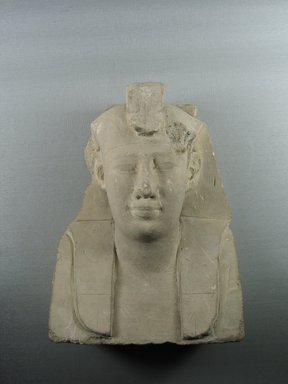
Sculptor’s Model of a Royal Head, 381–2nd century B.C.E. Limestone, 9 1/4 x 7 1/8 x 4 7/16 in. (23.5 x 18.1 x 11.2 cm). Brooklyn Museum, Charles Edwin Wilbour Fund, 34.1004. Creative Commons-BY (Photo: Brooklyn Museum, CUR.34.1004_view1.jpg)
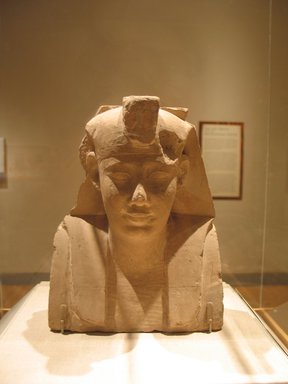
Sculptor’s Model of a Royal Head, 381–2nd century B.C.E. Limestone, 9 1/4 x 7 1/8 x 4 7/16 in. (23.5 x 18.1 x 11.2 cm). Brooklyn Museum, Charles Edwin Wilbour Fund, 34.1004. Creative Commons-BY (Photo: Brooklyn Museum, CUR.34.1004_wwg8_2014.jpg)

Sculptor’s Model of a Royal Head, 381–2nd century B.C.E. Limestone, 9 1/4 x 7 1/8 x 4 7/16 in. (23.5 x 18.1 x 11.2 cm). Brooklyn Museum, Charles Edwin Wilbour Fund, 34.1004. Creative Commons-BY (Photo: Brooklyn Museum, CUR.34.1004_bottom.jpg)

Sculptor’s Model of a Royal Head, 381–2nd century B.C.E. Limestone, 9 1/4 x 7 1/8 x 4 7/16 in. (23.5 x 18.1 x 11.2 cm). Brooklyn Museum, Charles Edwin Wilbour Fund, 34.1004. Creative Commons-BY (Photo: Brooklyn Museum, CUR.34.1004_side2.jpg)

Sculptor’s Model of a Royal Head, 381–2nd century B.C.E. Limestone, 9 1/4 x 7 1/8 x 4 7/16 in. (23.5 x 18.1 x 11.2 cm). Brooklyn Museum, Charles Edwin Wilbour Fund, 34.1004. Creative Commons-BY (Photo: Brooklyn Museum, CUR.34.1004_top.jpg)
Sculptor’s Model of a Royal Head
Egyptian, Classical, Ancient Near Eastern Art
On View: 19th Dynasty to Roman Period, Martha A. and Robert S. Rubin Gallery, 3rd Floor



